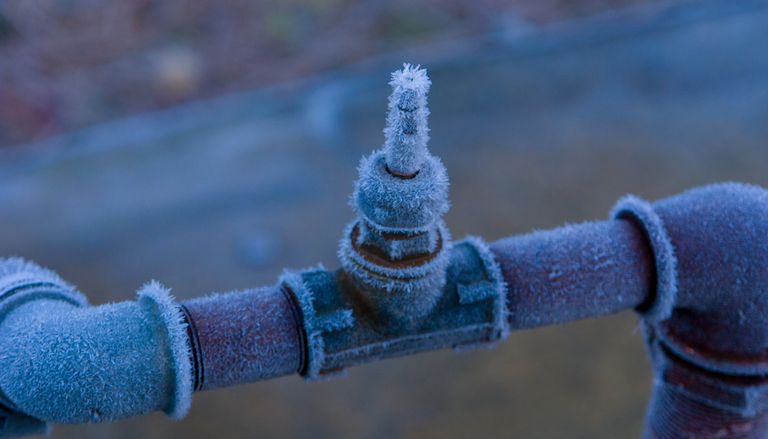Avoid Frozen Pipes in Winter: Expert Advice
Avoid Frozen Pipes in Winter: Expert Advice
Blog Article
What're your ideas about Helpful Tips to Prevent Frozen Pipes this Winter?

Winter can ruin your pipes, especially by freezing pipes. Right here's exactly how to prevent it from happening and what to do if it does.
Intro
As temperature levels decrease, the danger of frozen pipelines boosts, potentially leading to pricey fixings and water damage. Understanding just how to avoid frozen pipelines is important for homeowners in cold environments.
Understanding Icy Pipes
What creates pipelines to ice up?
Pipes ice up when subjected to temperature levels below 32 ° F (0 ° C) for expanded periods. As water inside the pipelines ices up, it expands, putting pressure on the pipeline walls and potentially creating them to burst.
Dangers and problems
Icy pipes can cause water disruptions, property damage, and costly fixings. Burst pipes can flood homes and cause substantial architectural damages.
Indications of Frozen Piping
Recognizing icy pipelines early can stop them from rupturing.
Exactly how to determine frozen pipes
Search for decreased water flow from taps, uncommon smells or noises from pipes, and visible frost on revealed pipelines.
Prevention Tips
Insulating at risk pipelines
Wrap pipes in insulation sleeves or make use of warm tape to protect them from freezing temperature levels. Concentrate on pipes in unheated or external locations of the home.
Heating methods
Keep indoor areas adequately warmed, particularly locations with plumbing. Open up cabinet doors to enable warm air to distribute around pipelines under sinks.
Safeguarding Exterior Plumbing
Yard hoses and outside taps
Separate and drain garden pipes before winter months. Set up frost-proof spigots or cover outside taps with insulated caps.
What to Do If Your Pipes Freeze
Immediate activities to take
If you believe icy pipelines, maintain faucets open up to relieve pressure as the ice melts. Use a hairdryer or towels soaked in hot water to thaw pipes gradually.
Long-Term Solutions
Architectural changes
Take into consideration rerouting pipelines away from exterior wall surfaces or unheated areas. Add extra insulation to attic rooms, cellars, and crawl spaces.
Upgrading insulation
Invest in top quality insulation for pipelines, attics, and walls. Appropriate insulation assists keep constant temperatures and decreases the danger of frozen pipelines.
Verdict
Protecting against frozen pipelines requires positive actions and quick responses. By understanding the causes, signs, and preventive measures, property owners can safeguard their plumbing during winter.
6 Proven Ways to Prevent Frozen Pipes and Protect Your Home
Disconnect and Drain Garden Hoses
Before winter arrives, start by disconnecting your garden hoses and draining any remaining water. Close the shut-off valves that supply outdoor hose bibs and leave the outdoor faucet open to allow any residual water to drain. For extra protection, consider using faucet covers throughout the colder months. It’s also important to drain water from any sprinkler supply lines following the manufacturer’s directions.
Insulate Exposed Pipes
Insulating your pipes is an effective way to prevent freezing. Pipe insulation is readily available at home improvement stores and is relatively inexpensive. Pay close attention to pipes in unheated areas such as the attic, basement, crawl spaces, or garage. Apply foam insulation generously to create a buffer against the cold. You can also wrap your pipes in heat tape or thermostat-controlled heat cables for added warmth.
Seal Air Leaks
Inspect your home for any cracks or openings that could let in cold air. Seal any holes around the piping in interior or exterior walls, as well as the sill plates where your home rests on its foundation. Additionally, make sure to keep your garage door closed unless you’re entering or exiting. Leaving it open creates a significant air leak that can lead to frozen pipes.
Allow Warm Air Circulation
During cold snaps, it’s essential to allow warm air to circulate evenly throughout your home. Leave interior doors ajar to promote better airflow. Open kitchen and bathroom cabinets to help distribute heat consistently around the rooms. If you have small children or pets, be sure to remove any household chemicals or potentially harmful cleaners from open cabinets for safety.
Let Faucets Drip
A small trickle of water can make a big difference in preventing ice formation inside your pipes. When temperatures drop significantly, start a drip of water from all faucets served by exposed pipes. This continuous flow helps prevent the water from freezing. Additionally, running a few faucets slightly can relieve pressure inside the pipes, reducing the chances of a rupture if the water inside does freeze.
https://choateshvac.com/6-proven-ways-to-prevent-frozen-pipes-and-protect-your-home/

I found that entry about Preventing and dealing with frozen pipes when doing a search on the search engines. Liked our article? Please share it. Let someone else check it out. We truly appreciate your readership.
Book Now Report this page